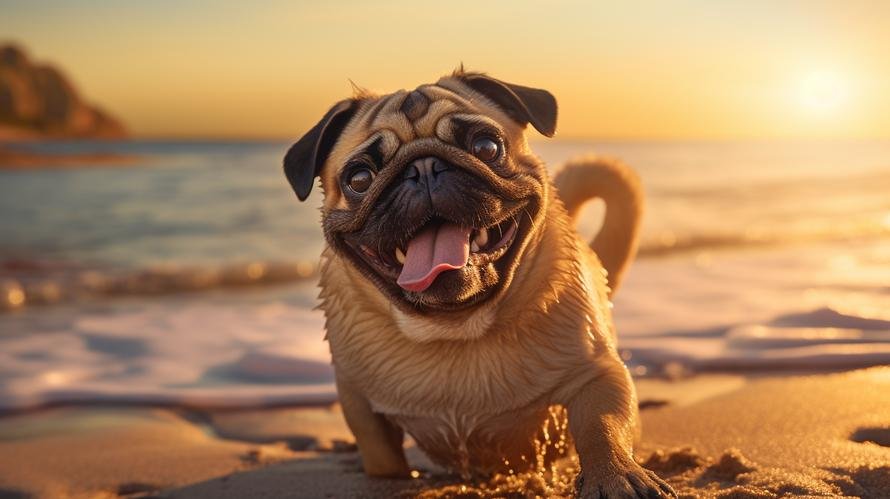Did you know that the unique and adorable Pug breed has ancient origins, tracing back to over 2000 years ago in China? Known as ‘lo-sze’ or ‘foo dogs’, these small yet sturdy creatures were treasured by Chinese Emperors. Today, Pugs are a beloved breed around the world, entertaining their owners with their mischievous spirit and endearing nature.
Despite their playful personality and reputation as family-friendly dogs, a question you might find frequently popping up is: Are Pugs aggressive? Pugs, with their squished faces and bug eyes, do not intuitively inspire images of aggression. However, as with any breed, a Pug’s nature and behavior depend largely on their upbringing and training, rather than their inherent breed characteristics. Let’s delve into this in detail.
A well-socialized and properly trained Pug is typically sociable, gentle, and loving. They thrive on human companionship, are highly intelligent, and possess a sense of humor that makes them a joy to be around. Contrary to common fears, the Pug is generally not an aggressive breed. They are eager to please their owners, making them relatively easy to train compared to other breeds.
But the keyword here is ‘generally’. It is worth noting that any dog, regardless of breed, can exhibit aggressive behavior under certain circumstances or if they have not been appropriately socialized or trained. Pugs are no exception.
Let’s dive into some of the reasons why a Pug might display signs of aggression:
1. Fear or Anxiety: If a Pug has not been adequately socialized from a young age, they may fear unfamiliar situations, objects, or people. This fear can manifest as aggression if the dog feels threatened.
2. Resource Guarding: Pugs may show aggression to protect their food, toys, or even their favorite human from perceived threats. This is a behavior that can be curbed with proper training and conditioning.
3. Health Issues: Underlying health issues, such as arthritis or dental problems, can cause discomfort and pain, leading a dog to become irritable or aggressive. Regular vet check-ups can help identify and address such issues early on.
4. Lack of Training: Pugs who have not received adequate training may not understand their place in the pack, which could lead to dominant or aggressive behavior. Early training and socialization are crucial.
Now that we understand potential triggers for aggression in Pugs, let’s explore some practical advice for nurturing a happy, well-adjusted Pug:
1. Socialization: Ensuring your Pug is exposed to various environments, people, and other animals from a young age can help them grow comfortable with unfamiliar situations and reduce fear-driven aggression.
2. Training: Teaching your Pug basic obedience from a young age is crucial. Setting firm, consistent rules will help enforce good behavior and discourage dominance or aggression.
3. Regular Vet Check-ups: Regular health check-ups can help identify potential health issues that may cause discomfort or pain and thus, aggression.
4. Positive Reinforcement: Rewarding good behavior and discouraging negative behavior using treats, praise, and petting can go a long way in guiding your Pug’s behavior.
In conclusion, Pugs as a breed are not typically aggressive, but like any dog breed, they can exhibit aggressive behavior if they are not properly socialized, trained, or are suffering from underlying health issues.
Therefore, if you find your Pug showing signs of aggression, it is crucial to identify the root cause and take appropriate action. Consulting with a professional dog trainer or a vet can provide more personalized advice. Remember, Pugs are a loving, playful, and intelligent breed known for their captivating personalities and affectionate nature!
So, are Pugs aggressive? The answer is no, not typically! They are delightful and playful companions. With a good home, plenty of love, and the right training and socialization, your Pug will likely be a loyal, loving member of your family with minimal risk of aggression.



